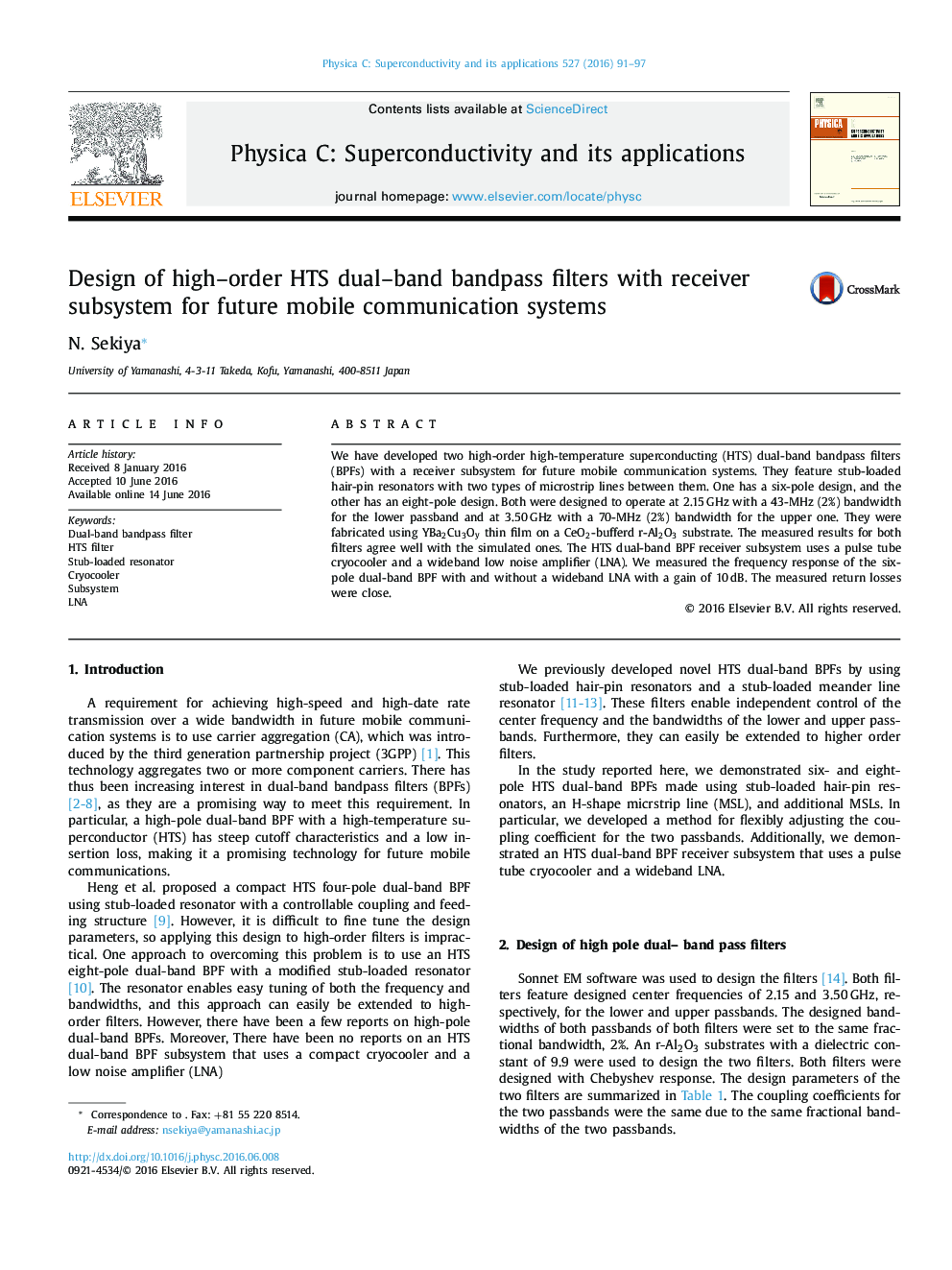| Article ID | Journal | Published Year | Pages | File Type |
|---|---|---|---|---|
| 1817363 | Physica C: Superconductivity and its Applications | 2016 | 7 Pages |
•We have developed two high-order HTS dual-band BPFs with a receiver subsystem for future mobile communication systems.•We developed a method for flexibly adjusting the coupling coefficient for the two passbands.•We demonstrated an HTS dual-band BPF receiver subsystem that uses a pulse tube cryocooler and a wideband LNA.•The proposed BPF is evaluated by simulation and measurement with good agreement.
We have developed two high-order high-temperature superconducting (HTS) dual-band bandpass filters (BPFs) with a receiver subsystem for future mobile communication systems. They feature stub-loaded hair-pin resonators with two types of microstrip lines between them. One has a six-pole design, and the other has an eight-pole design. Both were designed to operate at 2.15 GHz with a 43-MHz (2%) bandwidth for the lower passband and at 3.50 GHz with a 70-MHz (2%) bandwidth for the upper one. They were fabricated using YBa2Cu3Oy thin film on a CeO2-bufferd r-Al2O3 substrate. The measured results for both filters agree well with the simulated ones. The HTS dual-band BPF receiver subsystem uses a pulse tube cryocooler and a wideband low noise amplifier (LNA). We measured the frequency response of the six-pole dual-band BPF with and without a wideband LNA with a gain of 10 dB. The measured return losses were close.
